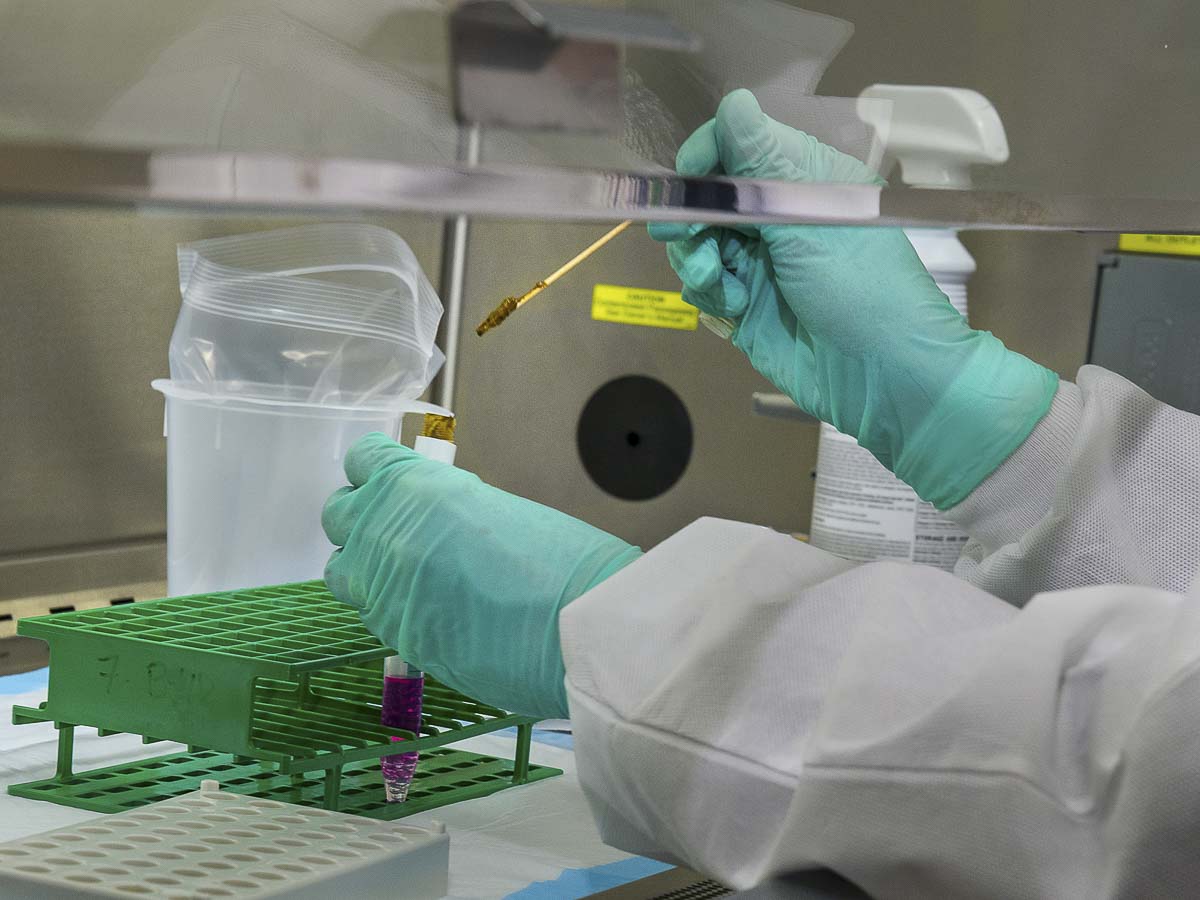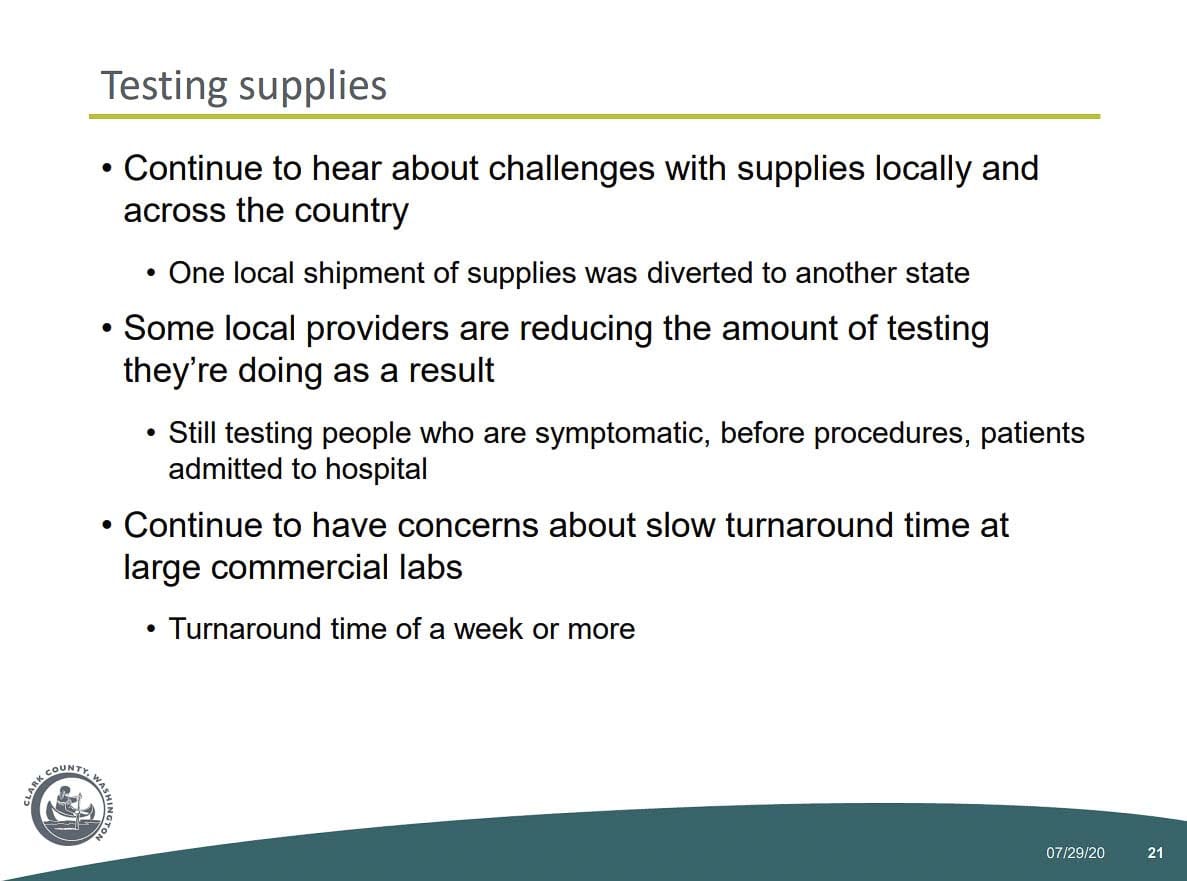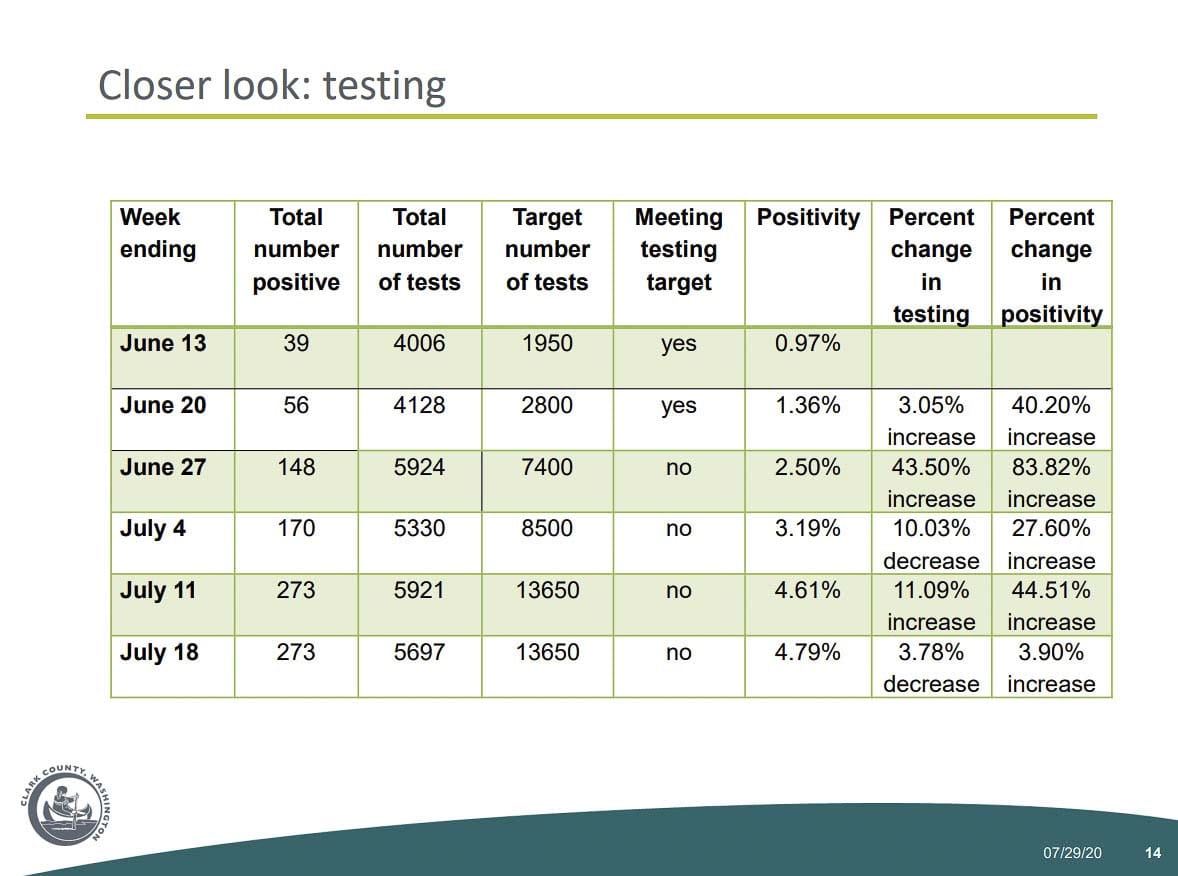Clark County added 29 new confirmed cases and two additional deaths from COVID-19 on Thursday
CLARK COUNTY — The resurgence of COVID-19 across parts of the United States has Clark County’s Public Health Director warning of a “deja vu all over again.”
On Wednesday, Dr. Alan Melnick told the county’s Board of Public Health that testing supplies are once again becoming increasingly scarce for area healthcare providers.

“We’re competing with areas of the country where there’s increased demand based on where the pandemic is,” said Melnick. “Supplies are getting diverted.”
A recent shipment of the rapid Point of Care tests bound for Clark County providers was recently diverted to the southeast, Melnick said, likely to Florida which is battling one of the worst current outbreaks in the country.
That increased competition is forcing some providers to add back in restrictions on who can get a test, focusing on people with symptoms, anyone requiring admission, and prior to a scheduled procedure.
“It’s deja vu all over again with what happened in April,” Melnick added.
Adding to Melnick’s worries, the increased demand for testing has pushed the time for results sometimes to a week or longer.
“One of our providers who uses the Point of Care testing had sent some samples to Quest and, after eight days, they had not received the results back yet,” said Melnick. “So, LabCorp, Quest, those national labs are having a much longer turnaround time.”

The problem prompted Clark County Public Health to issue a provider advisory last week, urging area hospitals and clinics to use in-state testing whenever possible in order to keep result times as quick as possible.
The newly resurgent restrictions on testing, and the delay in results, amount to more than a minor inconvenience. They could have a potentially crippling effect on the county’s efforts to track and isolate the virus.
“Not only did patients suffer with worrying about whether they’ve got COVID-19, and it causes angst there,” said Melnick, “but impedes our ability to isolate and then identify close contacts and quarantine them.”
Melnick said Public Health has added new staff this week, with more coming on board in the next two weeks, and quickly bumped up their dismal record of reaching only seven percent of new COVID-19 cases within 24 hours to a more respectable 70 percent.
Still, if they don’t get confirmation that someone is infected until more than a week after they get a test done, much of the benefit of that quick response time goes out the window.
“We make those decisions based on lab confirmation,” said Melnick, “and the turnaround time is just unacceptable.”

Infection demographics shifting
Another area of concern for Melnick is which age group is becoming infected.
In April and May, most infections were happening in older populations, with deaths being reported almost daily. Many of those were among people in long term care facilities, or retirement homes.
With those facilities improving their infection control measures, the recent rash of infections largely impacted younger people, said Melnick.

While that seemed to decrease the death rate, Melnick warned in early July that it was likely younger populations would inevitably end up exposing older, or more at risk people to the disease.
“We had some young adults who were at an event around, I believe, July 4,” said Melnick. “They get infected, and some of them work in long term care facilities.”
While the county has currently been updating its demographic data of new cases, statewide data shows recent infections have begun to shift towards older people.
“Whether it’s in families or in a work setting the disease can spread to older population groups,” said Melnick. “You really can’t control the virus that way.”
Thus far, the shift has not resulted in dramatically increased hospitalizations or death rates.
Clark County reported two more deaths on Thursday, bringing the total to 39. The most recent deaths were of a man in his 60s, and a man in his 80s, both with underlying health conditions.
In mid-July, COVID-19 and suspected COVID-19 cases generally made up 5-6 percent of occupied hospital beds in Clark County. That number has been closer to four percent over the past week, and daily case counts have dropped from around 40-50 per day to 20-30.
“I’m hopeful that we’ve plateaued,” Melnick said, “and as people continue to, hopefully, physically distance and use masks we’ll continue to see that number go down.”




